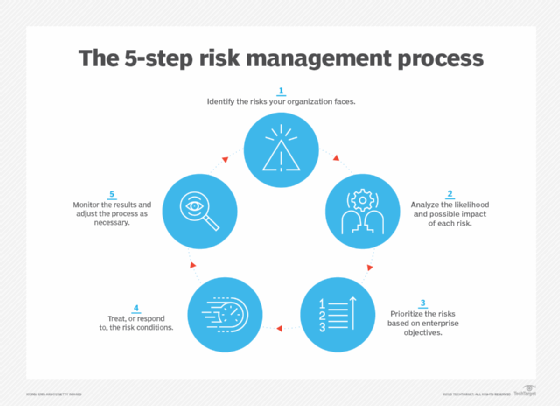Navigating the Challenges: Understanding the Importance of Risk Management
Navigating the Challenges: Understanding the Importance of Risk Management
Blog Article
The Important Importance of Risk Management in Getting Organizational Objectives
This is where Risk Management actions in, giving a structured method to determining, examining, and mitigating potential obstacles to proceed. As we explore the essential role of Risk Management in achieving business goals, one can't help but wonder: how does this translate right into real-world success?
Understanding the Concept of Risk Management in Business

The Essential Role of Risk Management in Strategic Preparation
Integrating Risk Management into calculated planning acts as a secure for companies, securing their long-lasting plans with a solid foundation of readiness and strength. Risk Management provides a structure for preparing for unpredictabilities and developing suitable feedbacks, making certain the organization's survival and prosperity even in the face of hardship. By integrating Risk Management into tactical planning, organizations can transform these unpredictabilities into opportunities for development and technology.

Strategies for Identifying, Assessing, and Prioritizing Risks
The process starts with Risk recognition, employing devices such as SWOT evaluation, which assists in determining prospective hazards and chances. Next, Risk evaluation is carried out to ascertain the potential influence and likelihood of each Risk. Threats are prioritized based on their possible impact and probability, enabling organizations to focus their resources on critical dangers.
Protecting Organizational Workflow Via Reliable Risk Management
In the organization landscape filled with uncertainties, effective Risk Management plays a pivotal role in protecting organizational operations. It acts as a safety shield, alleviating the negative impacts of prospective risks and making sure the smooth performance of all procedures. By determining and examining potential threats, Risk Management allows companies to establish durable contingency plans. This preventative technique help in keeping operational security, also when confronted with unanticipated scenarios. Fundamentally, Risk Management is the lifeline that keeps the organizational operations afloat among unstable waters. It ensures not just the survival yet the sustainable growth of a company, making it a crucial tool in achieving company goals. Organizations have to invest in detailed Risk Management methods to safeguard their procedures.

Transforming Potential Dangers to Opportunities: The Power of Risk Management
While prospective hazards might at first look like roadblocks to organizational success, efficient Risk Management can change them into chances. An aggressive approach to risk Management includes recognizing, assessing, and prioritizing dangers to create approaches that turn them right into potential benefits. This click for more procedure requires the development of a risk-aware society within the company, urging individuals to view dangers as possible discover this drivers for change and development, rather than simple risks. importance of risk management. With this lens, potential dangers become possibilities to innovate, boost processes, and enhance strength. Hence, by leveraging the power of Risk Management, companies can not just guard their operations yet additionally spur development and attain their goals in an unforeseeable company setting.
Instance Researches: Success Stories of Risk Management Driving Organization Objectives
Successful execution of Risk Management strategies has generated excellent outcomes in different companies, emphasizing the qualities of this method. International companies like Microsoft and Google, for instance, have actually leveraged Risk Management to minimize threats and exploit opportunities, driving their company goals onward. These examples show how successful Risk Management can not just guide businesses clear of potential risks but additionally lead them in the direction of their critical goals.
Conclusion
In conclusion, Risk Management is basically critical in attaining organizational goals. By integrating Risk Management into tactical planning, companies can better navigate uncertainties, secure procedures, and capitalise on possibilities, consequently straightening with lasting objectives.
At its core, Risk Management is the process of identifying, assessing, and dealing with possible dangers that can negatively impact an organization's objectives or operations. Next, Risk assessment is performed to establish the possible influence and probability of each Risk. Risks are focused on based on their click reference prospective impact and chance, enabling organizations to concentrate their resources on critical risks. By recognizing and examining potential hazards, Risk Management allows organizations to establish durable backup strategies. A positive method to risk Management includes identifying, analyzing, and prioritizing dangers to develop strategies that transform them right into prospective benefits.
Report this page